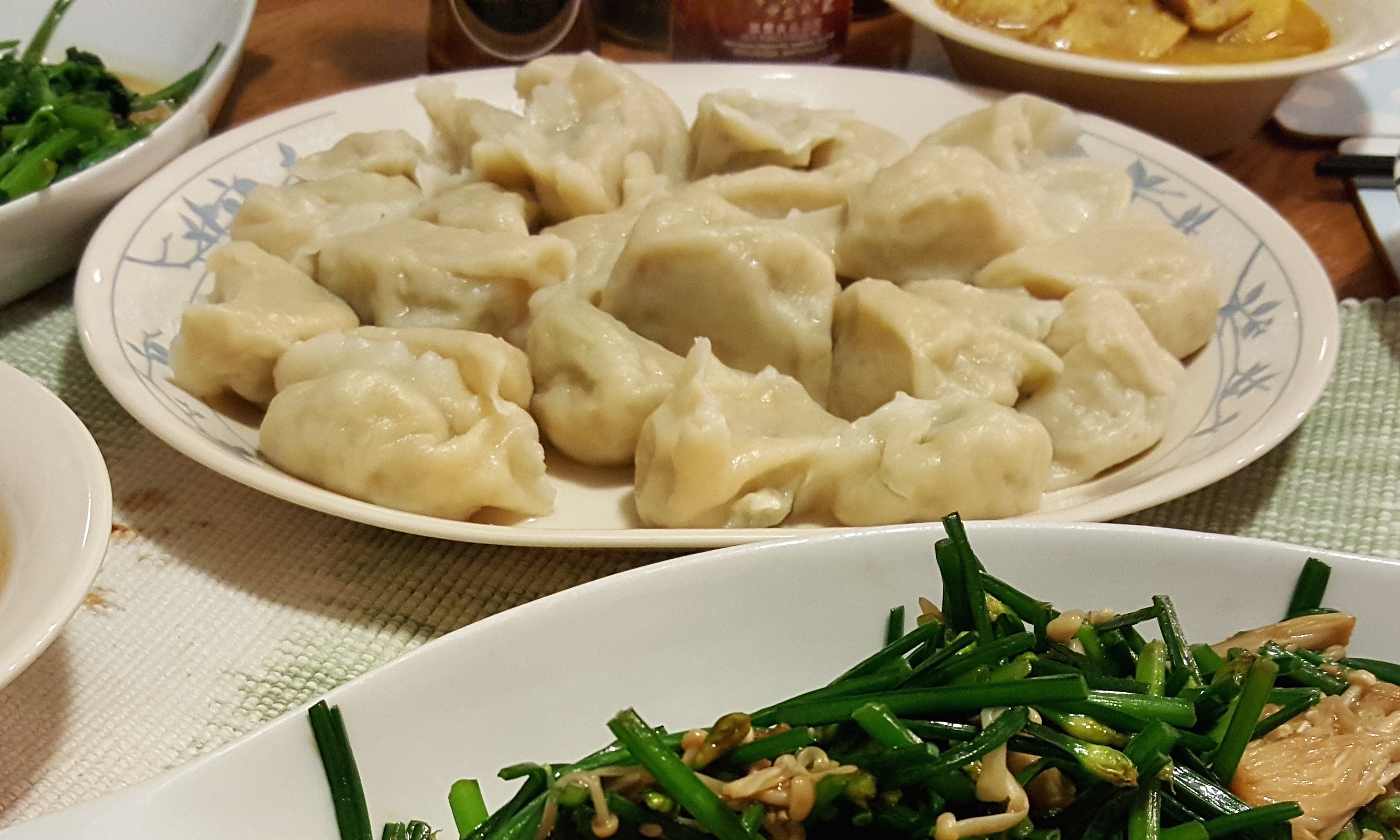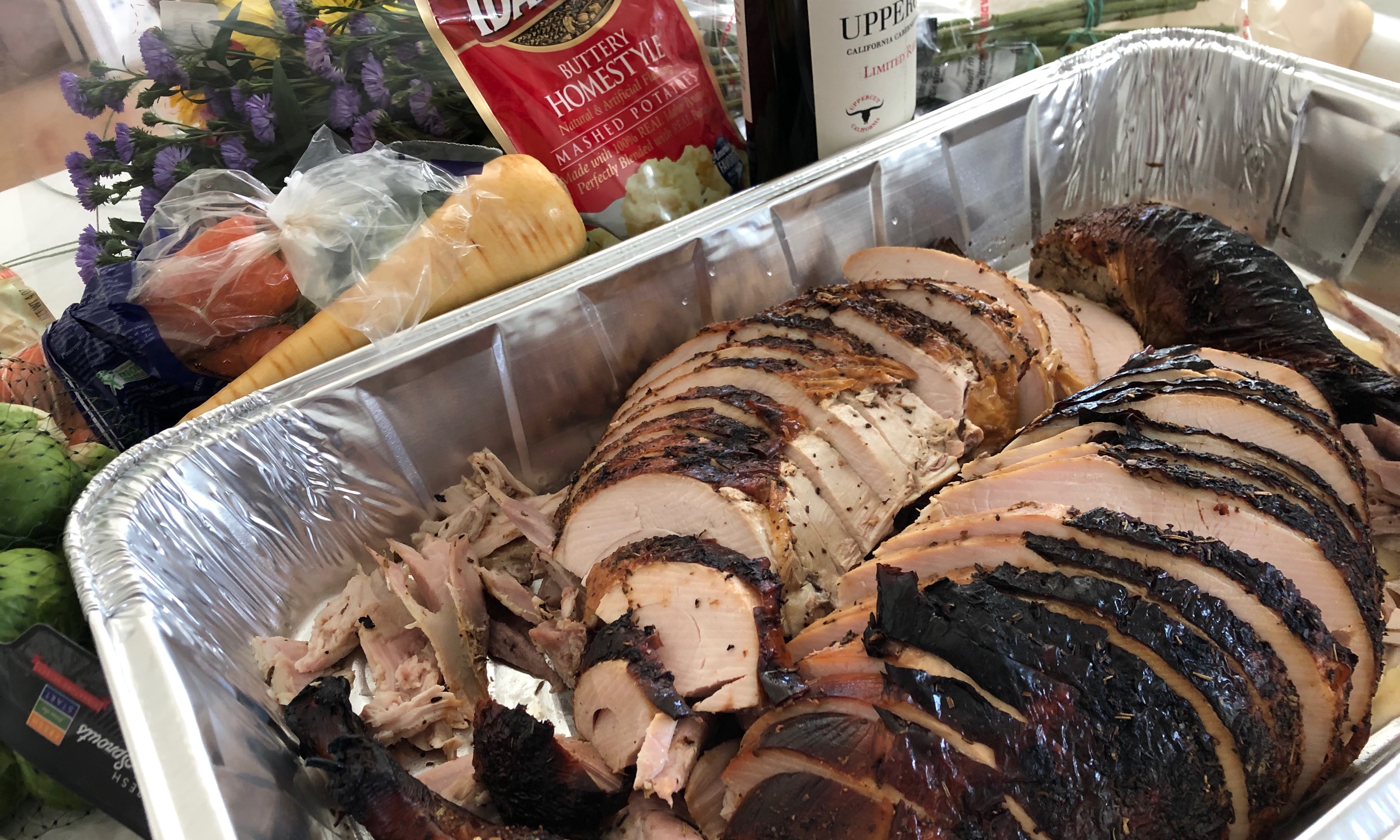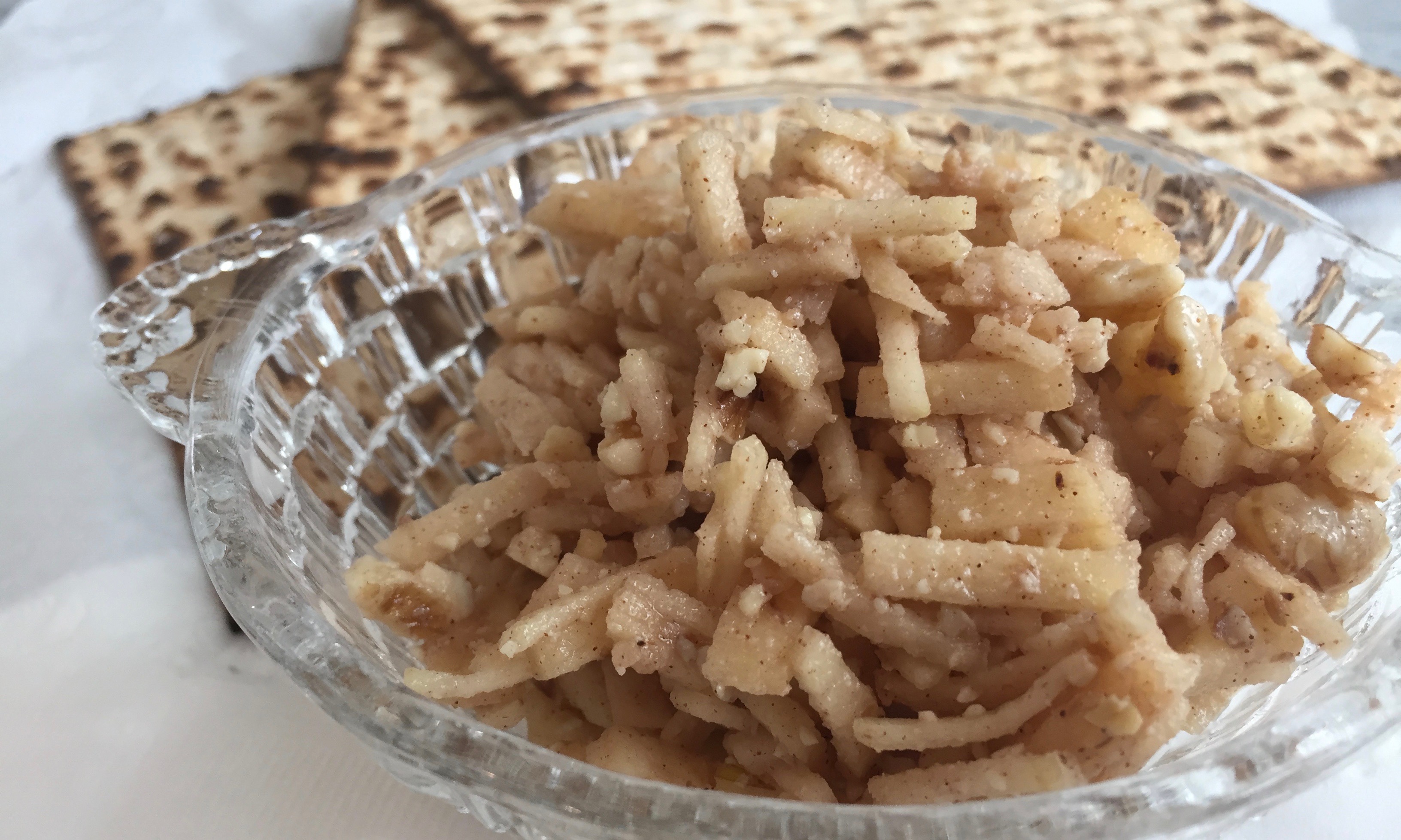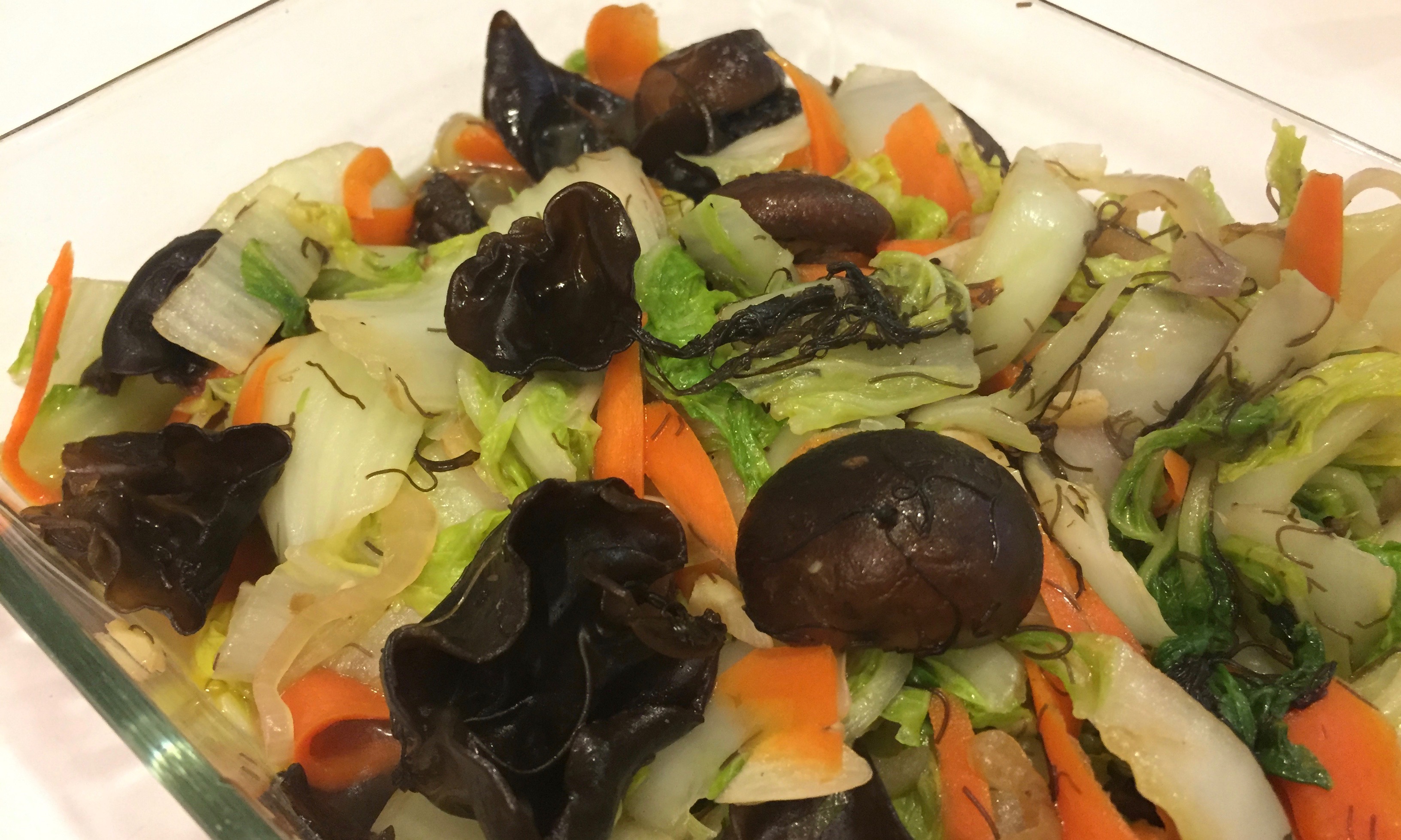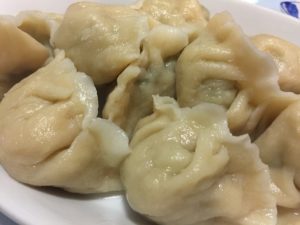
This year our family selected to put gold ingots on our menu for the first day of new year. That is, we followed the northern Chinese tradition of eating shui jiao, which supposedly resembles yuan bao, the gold or silver ingots.
Russell loves shui jiao–it’s gold to him. And making them is a little easier than cooking a traditional Cantonese New Year meal.
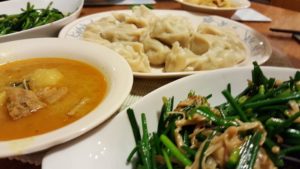 In truth I didn’t follow proper tradition. If I had done this correctly, dinner would have been the night before. That would have been a huge meal and we’d eat leftover for days afterwards. Use of a knife and work of any kind are avoided the first few days.
In truth I didn’t follow proper tradition. If I had done this correctly, dinner would have been the night before. That would have been a huge meal and we’d eat leftover for days afterwards. Use of a knife and work of any kind are avoided the first few days.
I would have steamed a whole chicken (head and tail intact), cooked a whole fish (head and tail intact), and fried specific vegetables. Expensive ingredients like abalone ($75 a can) and scallops would have been included and most importantly I would have dutifully added Buddha’s hair to a vegetarian dish. This delicacy looks as unappetizing as it sounds. It’s a fungi that looks like, well, hair. Wierd. Flavorless, it absorbs the taste of the sauce that goes with it. Nothing to do with the religion, it’s eaten because the name of the fungi sounds like prosperous vegetable.
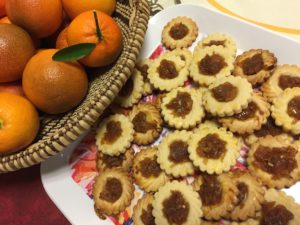 Also Russ was longing for some Singaporean chicken curry so I threw tradition to the north winds and made shui jiao and chicken curry to be dipped with slices from a French loaf. Ah–we had Singapore pineapple tarts for dessert, together with the best blood-orange clementines from Trader Joe’s. Festive enough for my family.
Also Russ was longing for some Singaporean chicken curry so I threw tradition to the north winds and made shui jiao and chicken curry to be dipped with slices from a French loaf. Ah–we had Singapore pineapple tarts for dessert, together with the best blood-orange clementines from Trader Joe’s. Festive enough for my family.
Anyway, I’ve been meaning to write about making dumplings–this is my start to a new year!
Shui jiao are simply boiled, strained and dipped in soy sauce and sesame oil. Also called jiao zi, they are a northern staple and eaten instead of rice. We southerners don’t eat this version of dumplings; the Cantonese have sui kow (same Chinese characters) but sui kow is boiled and served in a clear broth and double the size of wontons. Two-tons, you might say.
Shui jiao weren’t common at all in Singapore. My philosophy professor in university, Dr Kathy Ku who hails from Taiwan, introduced them to me. In the 1970s she knew of one place in Singapore where a Beijing gentlemen made these dumplings from scratch in a hawker stall in Queenstown. Today in Singapore, I’m sure more places make these dumplings in fancier eateries.
In Taiwan there are many jiao zi restaurants. Also you can buy really good freshly made skins at the market that are like home made skins. That’s where I learned to appreciate shui jiao.
 The best way to serve this is to hold a shui jiao party. Families often make this together. Making and wrapping the dumplings are a lot of work and having more hands to do the work makes it great fun. One person could eat 15-20 dumplings and so you’d want to make about 100 for four or five people.
The best way to serve this is to hold a shui jiao party. Families often make this together. Making and wrapping the dumplings are a lot of work and having more hands to do the work makes it great fun. One person could eat 15-20 dumplings and so you’d want to make about 100 for four or five people.
Typically when we eat jiao zi that is all that is offered. Sometimes it is served with a soup and pickled vegetables. I usually just have a fried vegetable in addition to it.
If you have not grown up making them in your home every day for dinner, the process of making shui jiao may need to be explained every step of the way. Because of its length I’ve put the recipe in four separate posts.
For instructions on how to make shui jiao, click these:
—Step 1: Making the filling,
—Step 2: Making wrappers, and then
—Step 3: Wrapping and boiling shui jiao.
Once you’ve mastered the skill of making the skins, it isn’t as complicated as it looks. Each dumpling is individually made so it does take time but it tastes so good. I’ve been to shops that sell 10 dumplings (made with store bought skins) for ten bucks! So–they are gold ingots after all.
